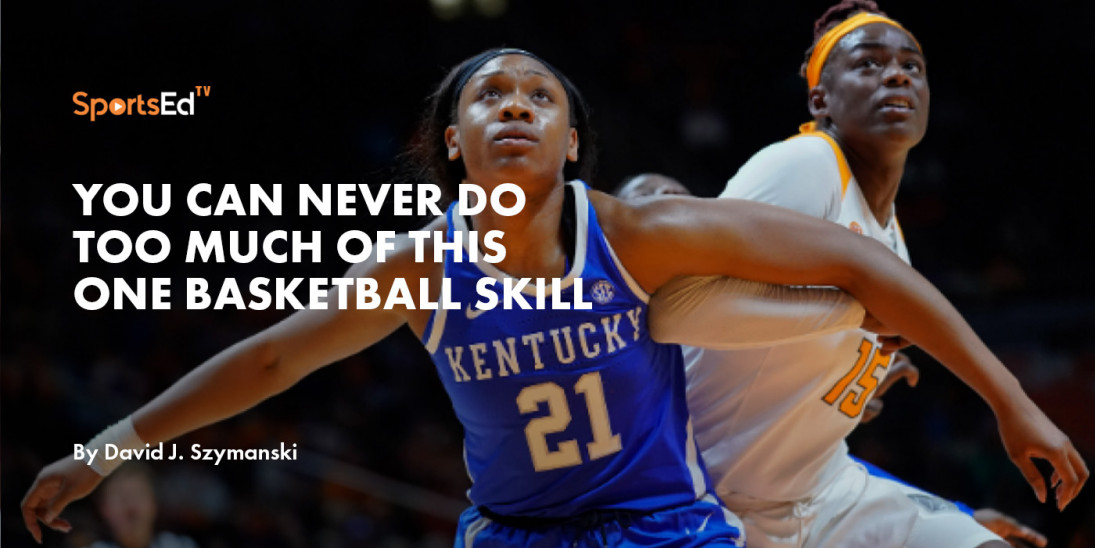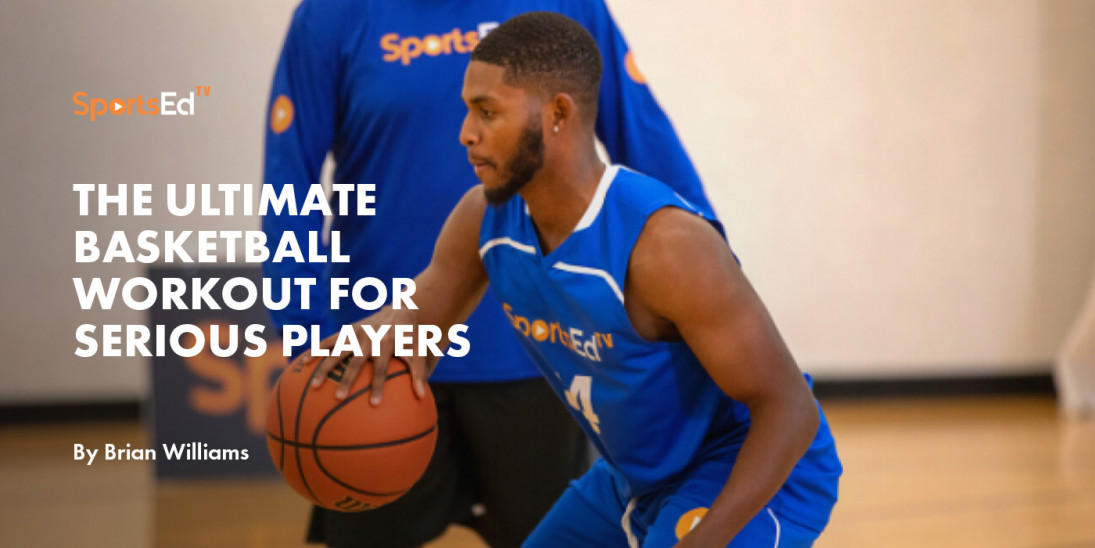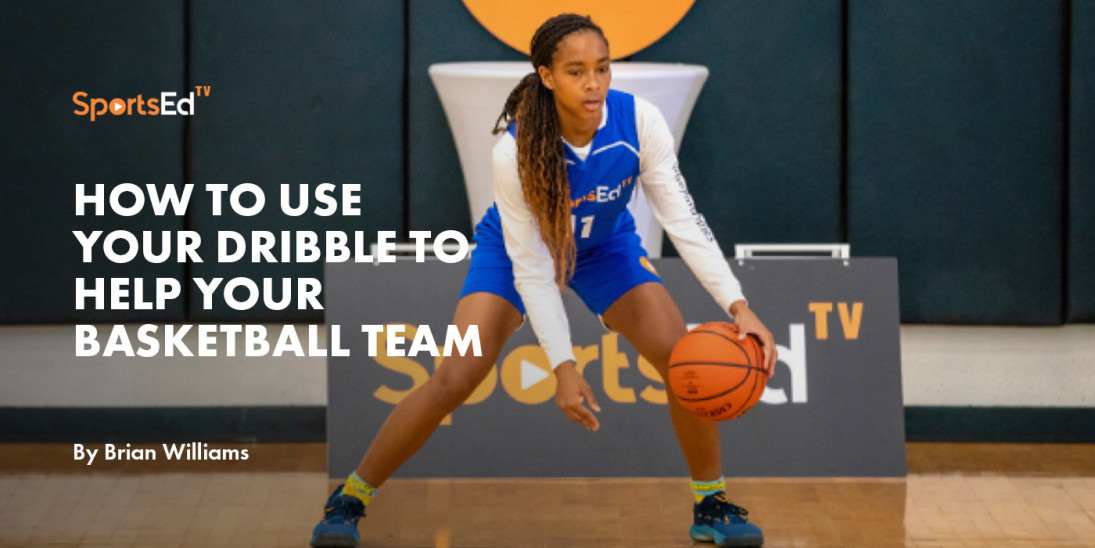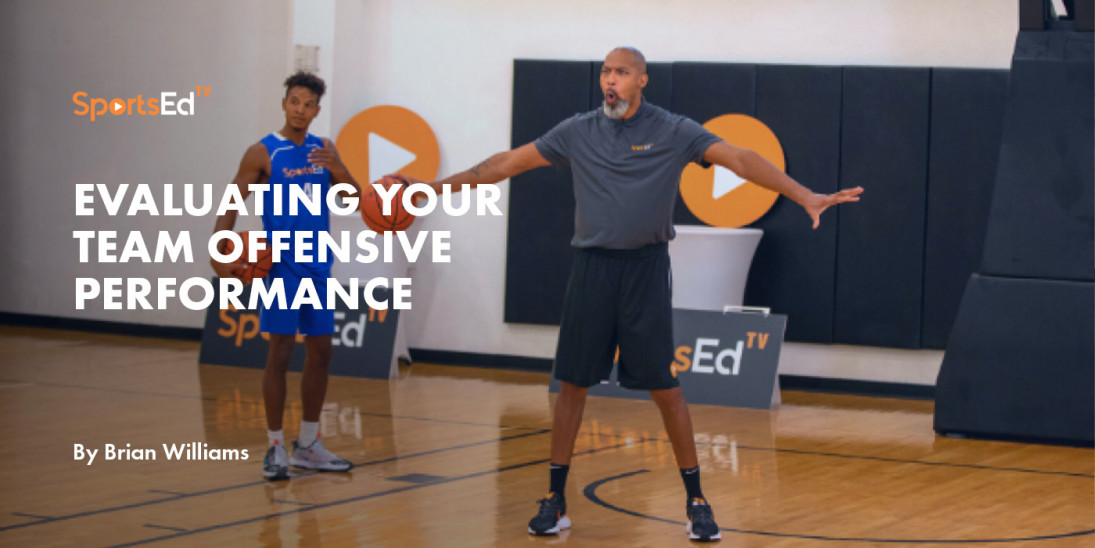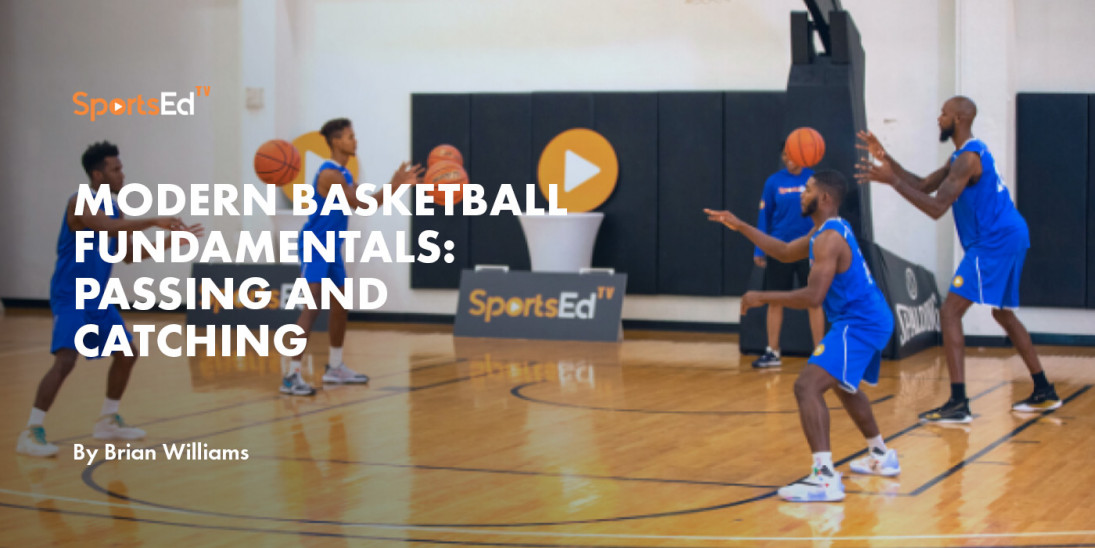Basketball
Welcome and thanks for visiting...

An Often Neglected, Yet Essential, Area in Basketball Coaching
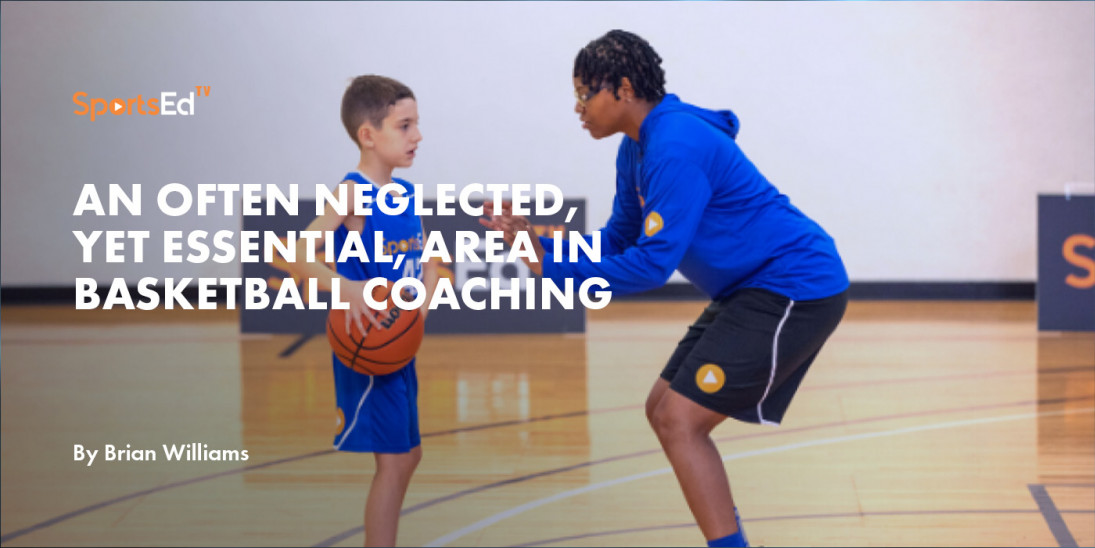
Authored by Brian Williams, Founder of The Coaching Toolbox
You got into coaching to help kids have a great experience playing ball and because you love the game. Nothing wrong with that! As a matter of fact if you can’t say both of those things about yourself, you ought not be coaching!
You didn’t become a coach to worry about warmups and conditioning. Right? WRONG!!! While those probably aren’t at the top of anyone’s list of favorite activities (players and coaches both), they are very important to the safety of your players and to giving them a chance to perform at their best in the late game minutes and seconds that often decide which team wins and which team loses.
So pay close attention to the advice in this article. You’ll thank us later!
You HAVE TO have a plan to warm your team up!
Winging it or just doing what your coaches did years ago when you played is not what your players need from you for warmups and conditioning. It is essential that you spend time learning about these areas of practice, planning for the efficient execution of each, and then taking the time to evaluate what impact your efforts are having and how you can improve them.
And, depending on what level you coach and how long your season is, you should have a season long plan in addition to your practice by practice plan. Basketball is a loooong season and your players’ legs take a lot of pounding on hardwood from the landings when they run and jump. So, take into account that you want to include warmup and conditioning in the amount of time you spend on each practice activity for the whole season.
This article will give you an excellent overview of ideas to consider for your warmups and conditioning exercises. It is not intended to be all inclusive. If your school or team are fortunate enough to have an athletic trainer and or a strength and conditioning class or coach, consult those individuals as you develop your warmup and conditioning program. Those individuals’ jobs include staying up to date on the most current research and techniques in their fields and are a great resource for specific trends, techniques, and for specific activities.
Make your warmup and conditioning activities basketball specific
Regardless of what part of practice you are planning, you should be making it game-like and a breakdown of something that actually happens in games. Make your warmup and conditioning activities as game-like as much as possible. I am not a fan of two line layup drills and three man weave warmup drills because they are not game-like. I would rather use “give and go” layup drills, running your team’s plays, running a five player on no defense fast break as ways to warm up. I’m sure that you can come up with many more just by simulating things that happen in game.
The best types of warmup and activities are those that you can do on the court and with a basketball. That way your players are making game-specific movements and on the surface where they will be practicing and playing games. Warming up and conditioning with a basketball has the added benefit of developing basketball skills in addition to the injury prevention and performance enhancement provided by a well planned and research based warm up and conditioning program.
Of course, more than likely, your practice facility is used by multiple teams and possibly even multiple sports. Since gym sharing probably limits the amount of on court practice time that you have, you might need to consider doing the warmup and conditioning portion of your practice off the floor so that you can spend your valuable floor time on basketball specific drills and scrimmages. Doing warmups and conditioning off the court is definitely not ideal, but is an option to consider when your on court time is limited. It is SO ESSENTIAL that you put a lot of thought into planning every minute of your practice time—including warmups and conditioning.
Depending on your relationship with the coach of the teams who practice before and after your team, you might be able to work out agreements with them where you can overlap practice times for the 1st 15 minutes of practice where you are warming up and the last 15 minutes of practice when you are doing your conditioning. It could work something like this: The team practicing before you does their conditioning on the floor while you are warming up to start your practice. And, the team practicing after you does their warmups on the floor at the same time you are doing your conditioning.
The size of the facility and the numbers on each squad will impact whether or not that plan works. The idea of this and all of our articles is not to adapt it word for word and idea for idea, but rather to use the points made to stimulate your thinking to come up with your own ideas that work best for your program.
Keep the big picture in mind when you plan warmups and conditioning
The skill that has the biggest impact on success in games is shooting. So, it is imperative for players to get a lot of work on shooting in practice. They need work on both the fundamentals and technique of shooting along with being able to shoot at game pace from game spots without losing their proper technique.
At an absolute minimum during each practice, players need to shoot 50 technique and 50 game pace shots. They can’t get that work in scrimmages because usually only one or two players get a shot each possession, so The more than that you are able to get in above those 100 shots, the better your team will shoot.
So, when planning practice, you need to give a lot of thought as to how your warmup and conditioning phases of practice will affect and are affected by your shooting repetitions and drills.
If you do your warmup, and then have players shoot stationary shots to practice and drill their technique, your warmup will wear off as their muscles cool down from a lack of motion.
Thinking about your conditioning, you might consider doing game pace shooting drills at the end of the practice when your players are tired as a way to simulate shooting shots late in the game when the players are more fatigued. If you do choose to do high energy shooting drills at the end of practice as a part of your conditioning, make sure that you are paying close attention to and coaching the players technique. Technique often slips when players are tired and that is when it is most important to have developed habitual proper technique.
Always have players do some light movement to warm their body prior to stretching their muscles. It is much more effective when you stretch slightly warm muscles than cold muscles. You want the muscles and tendons to be slightly warm before stretching them.
A sample practice plan might include something like this: Doing your no movement shooting form and technique drills prior to warming up.
5 minutes team discussion and announcements. Think of this time as a mental warmup which is important as well as a physical warmup. Most of the time your players will be tired after a full day of school when you start practice. They will have had disagreements with friends, boyfriends, girlfriends, teachers, parents, and other adolescent and young adult drama. That is normal, but it does affect the mindset that they bring to your practice.
Help them to understand that it is important that no matter what else is going on in their lives, they need to shift their focus to basketball for the next block of time that you have scheduled for practice. Certainly, if there are issues that are more important than basketball such as illness or family emergency, then the players should not attend practice.
Always have a theme for the day and use this time to teach attitude and effort to your players every single practice. Do as much of the teaching that you before your players start their physical warmup
10 minutes no movement technique shooting. Goal is for each player on the team to get 50 shots with as close to perfect technique as possible. This is not a warmup activity.
5 minute activity to warm the muscles prior to stretching. Activities can include jogging through your offense, jogging through your plays, running inbounds plays, fast break at a jog, jogging up and down or around the court dribbling a basketball with the non-dominant hand. Anything that is a basketball specific activity, but at a slower than game pace.
5 minutes stretching. Consult your trainer or strength coach on this to get a stretching routine that is individualized to your players. Different body types require different types of stretches to prepare to practice. Players coming off or rehabilitating from injuries need to stretch differently.
I am not in favor of the team circled around the captain to stretch while the coach is talking. That sends a message that stretching is not important since the coach is asking the players to focus on her or his words rather than on the stretching. For stretching to be effective it needs to be individualized and the mental focus needs to be 100% on the stretching. If you feel that because of your situation, you have no choice but to have player led group stretching, rotate that responsibility so that all players have a chance to lead.
One final warmup thought—practice halftime
One thing that happens every game that you should include in your practice schedule is the halftime cool down and then warm back up.
To make sure that you are prepared for this situation that happens every game, my recommendation is to practice it at least a couple of times a week. That will help players adjust to warming down, warming back up, and it will allow you as a coach to practice and learn how to effectively use the time that you have for your halftime break. It is usually more important that players get warmed back up to start the second half than listen to you for an extended period of time, only to return to the floor with no time to remaining to warmup before the start of the second half. Pick your most important two or three points to cover during your halftime talk, make them, and make sure to provide the players with enough time to warm back up.
Conditioning—it’s a whole practice activity, not a set of sprints.
I define conditioning as developing the mental and physical stamina to play hard and compete the last minute of the game as you do during the first minute of the game. To me, conditioning is distinct from strength, agility, speed, and explosive training. Those items are topics for another article and need to be planned in detail for both in season and out of season training.
Make it clear to your players that you are going to condition their feet, heart rate, respiratory system, and mind by going hard in all of your practice drills that are not specifically designed to teach technique. Design drills that not only teach and drill technique, but that also require your players to exert effort that will provide and maintain proper physical and mental conditioning.
Conditioning is preparing your players to perform at their best when the pressure and fatigue of a game is at its greatest. Conditioning is a factor in all aspects of basketball
during the last three or four minutes of the game. To condition your players to perform at these clutch times, you must have them work on it at the end of an already physically and mentally demanding practice.
Run competitive shooting drills at the end of practice when players are mentally and physically tired. Any shooting drill that you have that forces them to make a high volume of shots (at least 40 to 50 shots), in an extended time period (three to four minutes), with some confusion in the gym (many players moving and shooting at once), and under performance pressure (competing against the scores achieved of teammates or a set minimum achievement standard).
You can devise your own drills that will allow you to condition with a basketball or you can find ideas to tweak to your specific needs online. Drills that require players to pass, catch, and shoot under physical demands that are harder than a game is what you are looking to come up with either on your own or by borrowing them from someone else.
Another component of being able to finish a basketball game is having the necessary energy remaining to be able to defend at the end of a tight game. Any defensive drill that overloads the players when they are tired and puts pressure on them to execute with correct technique under time and score pressure is a great conditioner.
Here is one of my favorite defensive conditioning drills. We call it “51” because it requires the defense to play in a defensive stance and with perfect technique and movement for 51 seconds. Perfection is the execution of the defensive fundamentals that we emphasize to our team for the entire 51 seconds.
Fifty-one is a five on five drill that requires the defense to play with all out intensity, effort, and execution for 51 seconds to complete and win the drill. The drill does not end until your defense has executed 51 seconds of perfect defensive play.
Put 51 seconds on the scoreboard’s clock or on your phone’s timer if you don’t have access to a scoreboard. The clock starts when the offense puts the ball in play. The coach or coaches are looking for any defensive mistakes that you can find. Be picky. When you see a mistake, stop play, specify what the mistake was, teach how to correct it and then restart the countdown timer at 51 seconds.
If the defense causes a turnover, stop the clock and give the ball back to the offense. Play the new possession and run the clock from the point at which it stopped when the turnover was committed. If the offense takes a bad or contested shot and the defense gets the rebound, stop the clock and then resume the possession out front--running the clock from that point. If the offense scores, takes an uncontested shot, or gets a rebound, then the clock is reset to 51 seconds and the drill starts from the beginning. If the defense makes many mistakes, the drill will take a while to complete. When the clocks gets to 0:00 the defense completes and wins the drill.
The players will gain more conditioning and toughness from this drill than just having them run sprints. My challenge to you is to use this as an example and see how many drills you can come up with that will accomplish conditioning while playing basketball.
The final piece—the warm down.
Make sure that you give your team a chance to warm down prior to ending practice. A drill I like to use is called “around the gym free throws.” Start the drill by having players divide themselves up by jogging to the different baskets that you have in your gym. Six baskets with three players at a basket is ideal, but do whatever fits your situation. Put five minutes on the clock and start the timer.
All baskets start independently. At each basket, one player shoots a free throw. If she misses, she shoots again until she makes the shot. Once the player makes a free throw, they then shoot until they miss with the maximum streak being five consecutive makes. Once they either miss before getting to five or make five free throw in a row, they rotate one basket to their right. Make sure that they jog from one basket to the next. This warm down drill will end when the five minutes that was put on the timer to start the drill has counted down to zero.
I have provided a few ideas for warmup and conditioning drills in this article, but that is not the main focus. The main focus has been to help you understand the importance of warmup, conditioning, and warm down as they relate to preparing your players to be at their best at the end of game and in reducing injuries.
As you realize their importance, you can develop your philosophy, spend time creating specific and purposeful plans to make these activities an important part of your season long and individual practice session planning.

